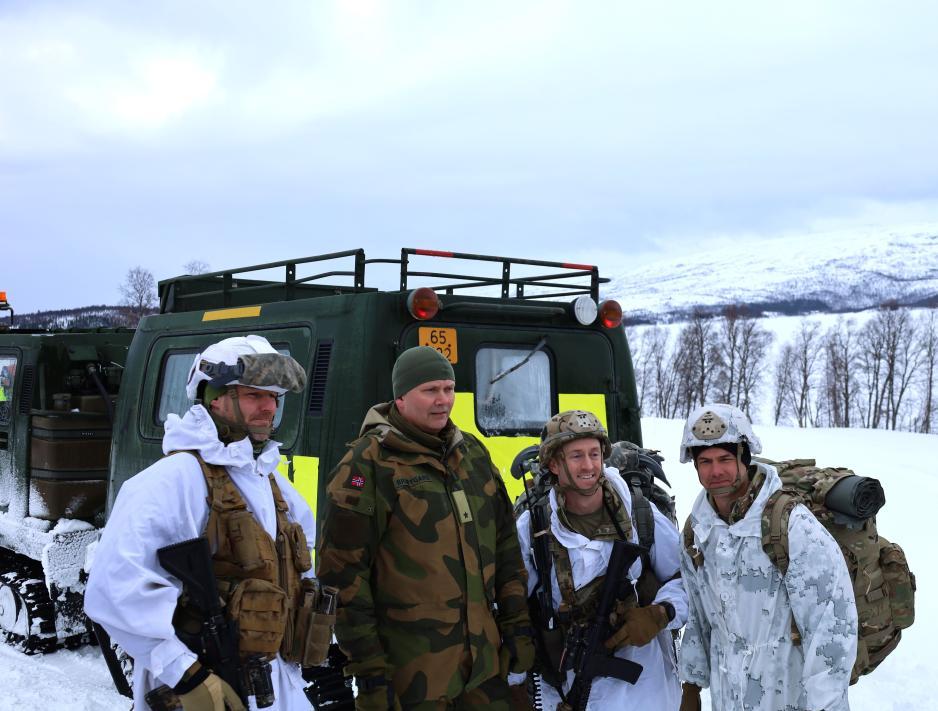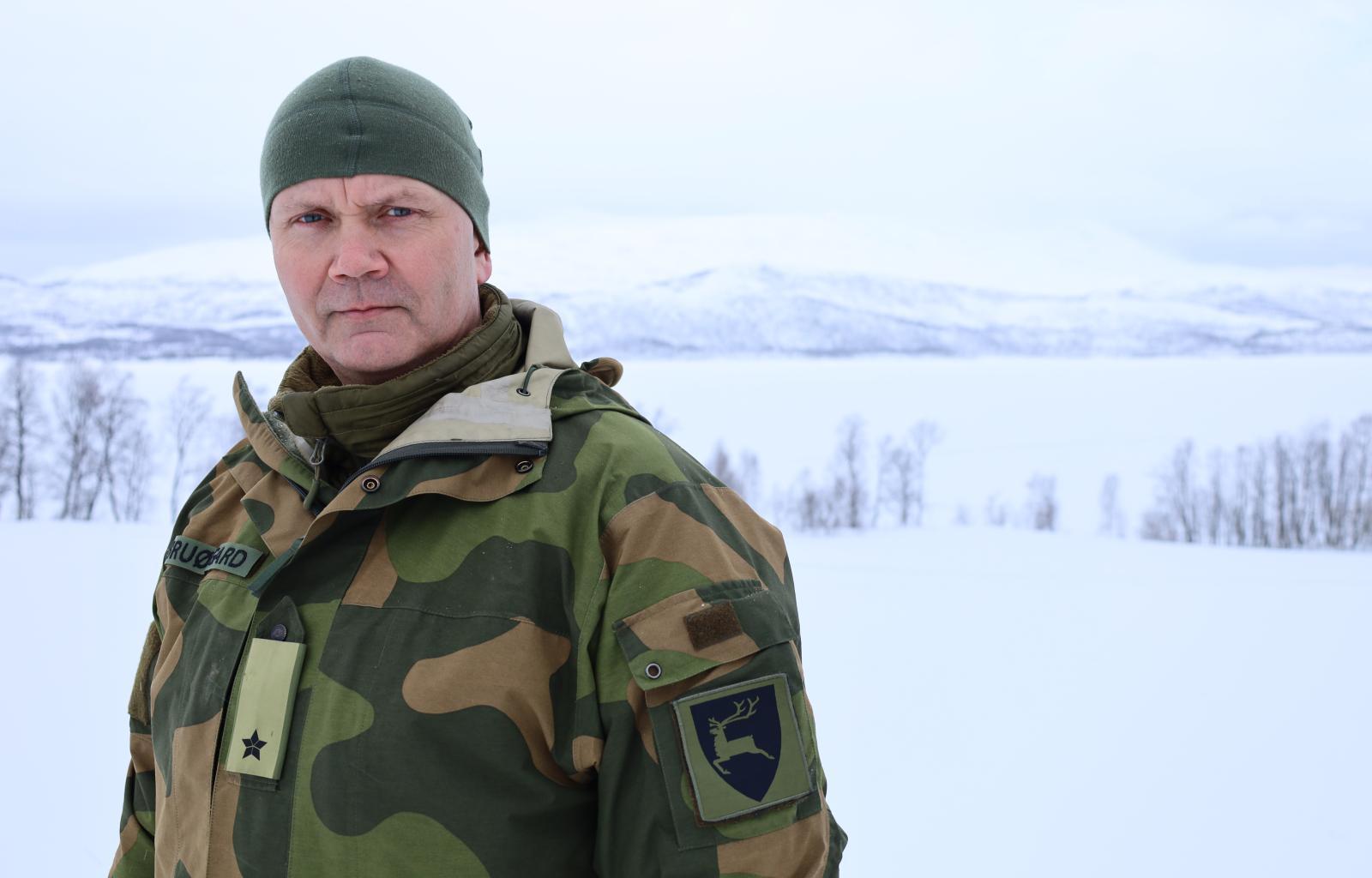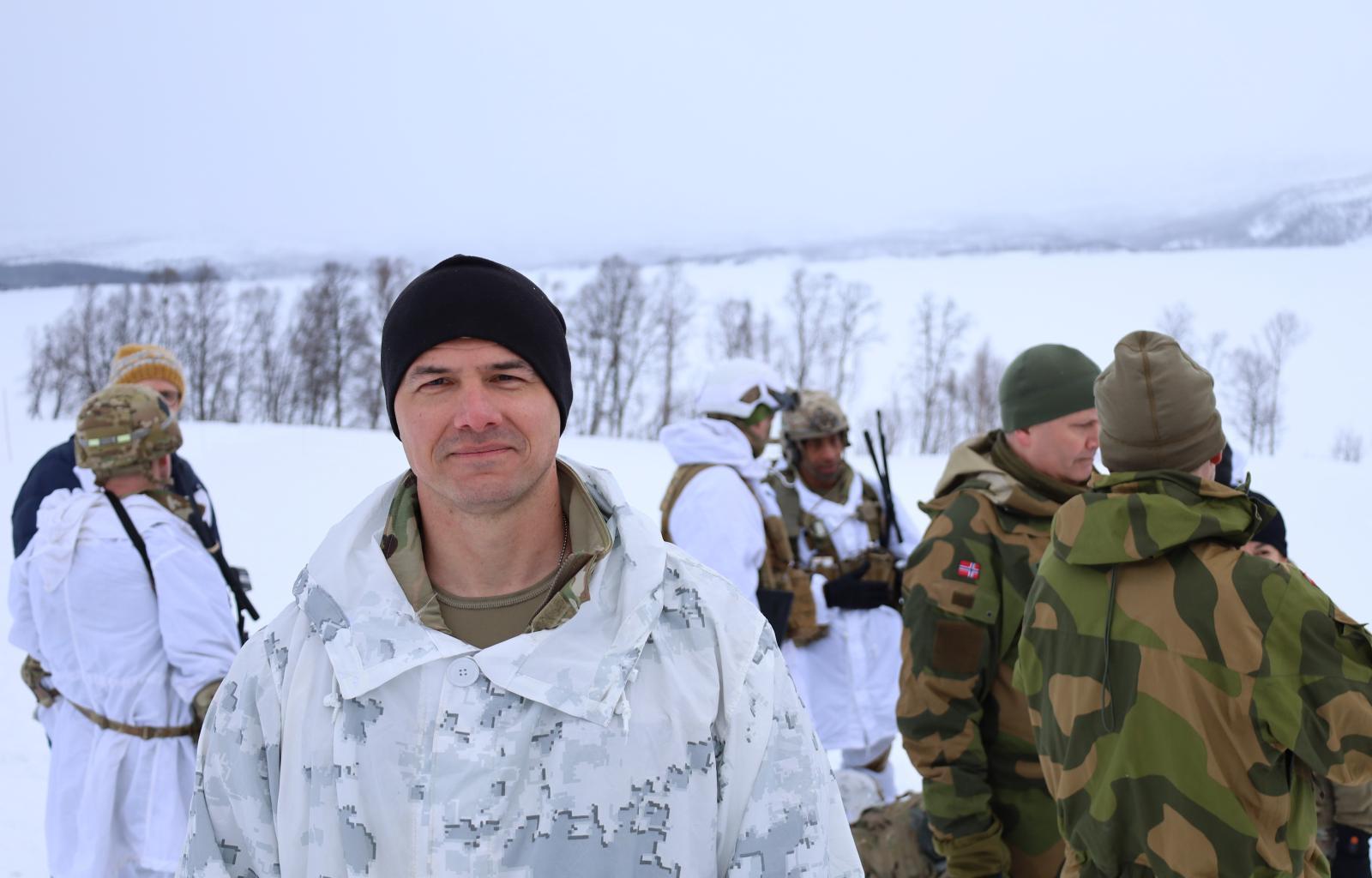US Arctic Paratroopers Practiced Rapid Deployment in Northern Norway
Bardufoss (High North News): Over 100 US paratroopers jumped out over Inner Troms in Northern Norway after a seven-hour flight over the North Pole from Alaska. A force deployment such as this shows the US's ability and will to defend Norway and the alliance, says Brigade Nord Commander Terje Bruøygard.
On Monday, seven hours after takeoff in Anchorage, Alaska, en route over the North Pole, the massive transport aircraft C-17 neared Inner Troms in Northern Norway. 130 US Army paratroopers were aboard, ready to conduct a large-scale parachute jump over Takvatnet lake.
The morning's weather conditions were challenging. The wind strength was alternating. The cloud cover cleared up somewhat, but quickly settled again over the snow-covered peaks surrounding the icy lake.
"The dive depends on whether or not they find a window of good conditions," explained Lt. Colonel Bjørn Andreassen, Commander of Brigade Nord's 2nd Batallion, to High North News.
What at times seemed unlikely became a reality as a row of parachutes floated down in front of the Mauken mountain.
"Co-training removes friction"
The deployment exercise, carried out by the Alaska-based 11th Airborne Division, demonstrates the US Army's ability to quickly deploy forces from one region in the world to another on short notice.
The operation is part of the Arctic Shock exercise, taking place in Inner Troms in Northern Norway, where the American forces will train with the 2nd Batallion of Brigade Nord.
"We will be a "link-up" force for the 11th Airborne Division. That entails receiving them and leading them back to the base area, from which they will operate throughout the week," says 2nd Batallion Commander Andreassen.
Arctic Shock
- The Arctic Shock exercise is a sub-exercise of the large-scale military exercise Nordic Response, which recently took place in northern parts of Norway, Sweden, and Finland. Both are part of the NATO exercise Steadfast Defender – the alliance's largest exercise in decades, taking place across several regions and many months.
The US and Norwegian soldiers will conduct winter training and a field training exercise toward the Mauken firing range.
"For us as a battalion, this is a good arena to conduct co-training with allied forces. It is very valuable for us to share experiences with combat in winter conditions," says Andreassen, pointing out the importance of training shoulder-to-shoulder with the Americans.
"It is important that we spend time getting to know each other. This removes part of the friction if it becomes necessary for them to support us in a live-fire situation."
Signaling and deterrence
Brigade Nord Commander Brigadier Terje Bruøygard emphasized that the exercise in rapid deployment is of great significance.
"The 11th Airborne Division can deploy its force either by parachute or by landing on the ground. This entails being able to quickly move relatively large land forces into an operational area," he explains and continues:
"In a crisis situation, we want the opportunity for rapid reinforcement through the air if necessary – and this can be done in one day from initiation to landing on the ground."
He further highlights that a force deployment such as this showcases the US's will and ability to contribute to defending Norway and its allies.
"The fact that the Americans are willing to conduct such a demanding operation in peacetime also shows their dedication to defending the alliance."

From the left: Commander of the 2nd Batallion, Bjørn Andreassen, Brigade Nord Commander, Terje Bruøygard, as well as US soldiers from the US 11th Airborne Division. (Photo: Hilde-Gunn Bye)
Contingency force
The 11th Airborne Division is the US Army's newest and only Arctic airborne division. The force is stationed in Alaska but conducts training, exercises, and operations in the Indo-Pacific region, the Arctic, and Europe," explains Colonel Jimmy Howell, Commander of the 2nd Infantry Brigade Combat Team (Airborne).
"It's a contingency force capable of conducting operations anywhere in the world. It is important to the division to be able to respond quickly to any type of contingencies," he tells HNN and adds:
"It is important for us to work with our NATO ally here in Norway. We have much in common with Brigade Nord, stationed here in the Arctic. Carrying out this type of exercise, as two Arctic forces, tests our preparedness and builds interoperability. We will spend the next week here with Brigade Nord to improve our proficiencies in the Arctic."
Jumped with the Americans
One of the soldiers who parachuted onto Takvatnet lake was the Norwegian soldier Mathias Navelsaker, who was third out of the aircraft. Before the flight, he traveled to Alaska to train with the US forces.
Navelsaker works in the 2nd Batallion and previously has one year of experience as a paratrooper.
"It has been a while since I have jumped, but it went very well. The flight was surprisingly comfortable. C-17 is definitely the largest aircraft I have jumped out of," says Navelsaker, who was awarded the 11th Airborne's parachute badge after landing.
Mathias Navelsaker from the 2nd Batallion (to the right) was awarded the 11th Airborne Division's parachute badge after landing. (Photo: Hilde-Gunn Bye)
11th Airborne Division
- The Alaska-based 11th Airborne Division was re-activated in June 2022. The US Army's Alaska headquarters were then redesignated as the 11th Airborne Division.
- A US Army airborne formation based in Alaska.
- Frequently termed the US Army's Arctic force.
- The force has undergone an extensive transformation in the past years to rebuild Arctic expertise and capabilities.







